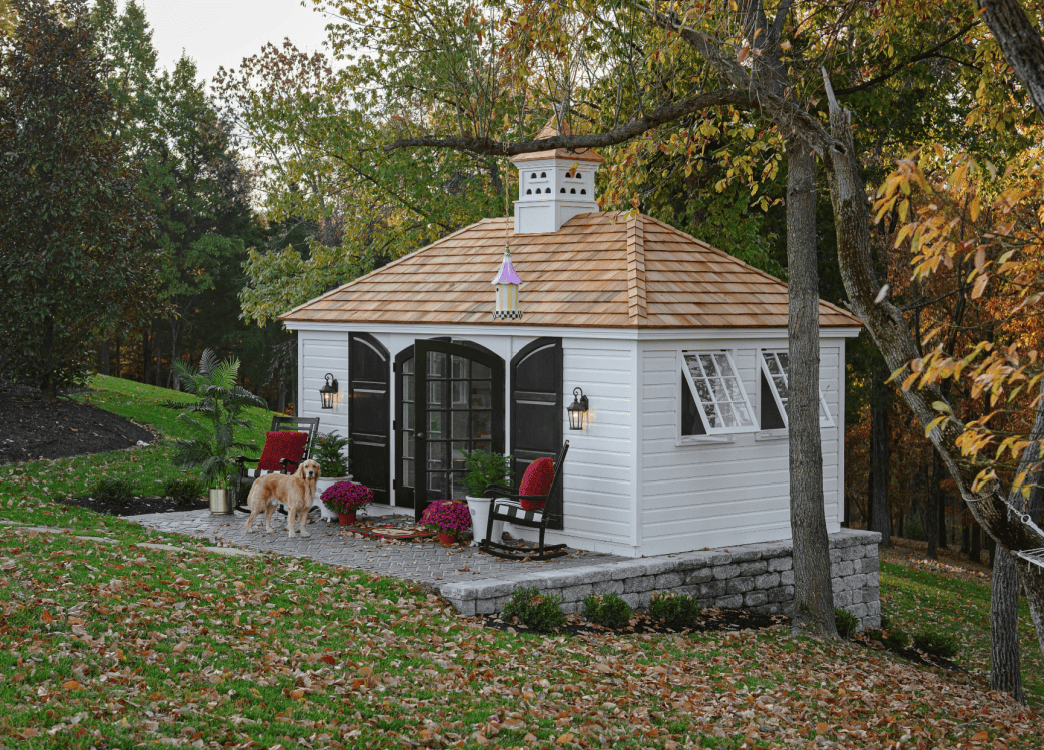
How to Become a Tiny House Landlord
In recent years, tiny homes have become a popular alternative to the traditionally large American-style home and a viable way to provide shelter within a small space. The structures have been used by those trying to downsize and as short-term rentals, disaster relief housing and homeless relief housing. Some tiny homes are actually found in trees.
Although many people consider a house up to 600 square feet to be a tiny home, the 2021 International Residential Code (IRC) Appendix AQ, stated that tiny houses are dwelling units measuring 400 square feet (37 m2) or less in floor area, excluding lofts.
Small homes = big profits
Leasing tiny homes is one of the latest trends in the rental business. They have proven to be a good venture, especially for first-time investors. Tiny houses range in price from just $30,000 to $60,000 to purchase and are expected to last up to 50 years depending on the quality of materials and construction. Custom-built or more elaborate versions of little homes can range as high as $100,000. However, they do not appreciate in value as quickly as a traditional home.
On the other hand, tiny houses and ADUs (accessory dwelling units) that are situated on a property that also has a traditional dwelling may see a greater increase in value. According to Bankrate, if your tiny home is on land that you own and is built on a solid foundation, you are more likely to receive a good return on your investment when you go to sell your home. In other words, the value of your tiny home is directly related to its permanence.
Building Design + Construction recently noted that “National REITs like Avalon Bay Communities and local investor-operators have completed many ADU projects, are pleased with the results and plan to keep building more.
“Changes in state law have made accessory dwelling units the fastest-growing sector of California’s housing market, and multifamily owners have embraced the trend. They have turned carports, greenways, storage spaces and laundry rooms into entry-level apartments, sometimes in less than a year from conception to completion.”
AvalonBay has added about 50 ADUs into some of its California communities. The average 425-square-foot studios and junior one-bedroom units generate rent between $4 and $8 per square foot. On average, the units have been rented out within 30 days and there have been minimal concerns from existing tenants.
Get a Free Multifamily Loan Quote
Access Non-Recourse, 10+ Year Fixed, 30-Year Amortization
Building a tiny home to rent
Of course, in real estate, it is vitally important to consider location. If you are going to use your tiny home for short-term rentals, pick an area close to local tourist attractions, parks, beaches, schools, colleges and business districts.
Before you begin, you’ll need to find out if you can legally operate a short-term rental in your intended area. Many municipalities have minimum square footage requirements for residences, which tiny homes may not meet. Some areas may regulate ADUs or require specific foundation types. There may also be certain prerequisites regarding plumbing and electricity.
Once you have established that it is permissible to build there, you will need to check with your local building department to understand their zoning laws, building codes and restrictions. It is highly recommended that you hire a builder who is also familiar with the tiny home laws and regulations for the county in which you will be developing.
Financing for your tiny home may be more difficult than if you were constructing a traditional home, but in some cases, you may be able to secure an FHA loan. If the tiny house is fixed to a permanent foundation, potential owners can explore conventional mortgages.
You may be considering creating a tiny home community of multiple small homes. Remember, you need to make sure the cost of its development does not surpass your potential ROI (return on investment). As a tiny home developer, you stand a chance of receiving a high return on investment because of their inexpensive prices.
Currently, the largest tiny home development in the country is located along the Arkansas River in Salida, Colorado, and features 200 tiny homes for rent. The homes are pet-friendly and include amenities like free Wi-Fi, air conditioning, and heating.
AAOA member Alex Gladkov is presently building a tiny home community in Barstow, CA, which will eventually include 51 residences. Alex shared that “Hidden Mesa Estates offers a great financial advantage for those who seek a sleek house without the burden of costly rent.”
Because of their size, tiny homes are simple to maintain and are less expensive than larger ones in terms of taxes and building, heating, maintenance and repair costs. Renters, property owners and managers have fewer maintenance and repairs to deal with since there is less area to look after. In addition, electricity, gas, water and trash disposal bills are all significantly reduced when renting a tiny home.
Tiny homes are often more environmentally friendly than traditional homes because they are smaller and require less energy to heat and cool. A growing number of small home builders include energy-saving features, like solar panels and washer/dryers that can function as two separate appliances in one. Many tiny homes are built off the grid and can have little to no environmental impact at all.
Preparing your tiny home for tenants
The aesthetics and style you choose for your tiny house rental property can have an impact on the type of renters you attract. People interested in tiny homes come from a wide range of backgrounds and personalities, so choosing a clean, modern look might appeal to some, while a cozy, cabin-inspired interior might draw in others.
Whichever décor you choose, tiny homes by definition are less expensive to build and decorate, making it easier to afford higher quality furnishings and hardware. Smart technology integration is also far less expensive for tiny homes than larger properties as they require less equipment.
Many tiny houses feature a loft for sleeping and storing. However, if you are expecting to rent to senior citizens and/or disabled persons, larger floor plans that keep essential elements like a bed, bathroom and kitchen on the main floor are more functional.
According to Hospitable.com, use stylish short-term rental furniture that provides the function guests need and makes your home welcoming. You should decorate your space to make it more visually appealing to your guests by investing in such items as accent pillows, vases, plants, mirrors and artwork. Some Airbnb owners try to stand out from the competition by creating themed accommodations. Others work with interior designers to create an especially attractive space.
Furnish your home with the essentials guests will need for a comfortable stay, such as restful sleeping arrangements, clean bed linens and bathroom amenities such as tissues, toilet paper, hand and body soap, towels and a variety of lotions as well as a first aid kit.
Equip the kitchen with paper towels, dishes, wine glasses, flatware, coffee maker, electric kettle, toaster, pots and pans and enough storage space to put them in.
Don’t forget the exterior of your rental. A porch and a garden will create an excellent and welcoming first impression for renters looking for a stay in a unique, cozy space at an affordable price. If you have a rear yard, a fire pit and seating will be appreciated amenities.
Consider the type of travelers you want to attract and add special items that matter to your guests the most. If you are renting to a family with children, put out age-appropriate toys. For business guests, provide Wi-Fi, smartphone chargers and a laptop-friendly workspace. The secret to a five-star review is to exceed their expectations.
Do not forget to put out a welcoming greeting card and a thoughtful gift, such as a bottle of wine, a fruit basket, a box of candy or fresh flowers. As Hospitable.com points out, “Better experiences mean better reviews and better reviews mean more bookings. The process is simple.”
They also recommend that you sign up for Airbnb’s free rental protection to protect you in case something happens at your property. This Airbnb insurance is called AirCover for Hosts and provides $1,000,000 compensation for property damage and a similar amount for third-party injury. But AirCover for Hosts doesn’t cover everything, so you may want to consider an additional insurance policy to provide full coverage.
How to start a tiny home rental business
Many rental property owners choose to create an LLC for its tax advantages and protection from personal liability. If you don’t already have your real estate investments set up as a separate legal entity, this is the time to do so. Even if you’ve already used an LLC for other properties, you might consider creating a separate LLC for your tiny house rental.
You might also consider setting up a land trust as an extra measure of security. In addition to the reduction of legal liability afforded by the LLC, a land trust can help obscure personal ownership. This can add an additional layer of protection for avoiding the incursion of plaintiffs against your personal assets.
At this point, you should have given thought to what your policies and procedures will be. What are the minimum and maximum stays you will allow and how will you accept reservations? What are your rules regarding property upkeep and damages? Can tenants have parties or pets? All of your policies need to be incorporated into your lease. It is also a good idea to post them in the rental unit.
Airbnb, Vrbo and Booking.com are among several peer-to-peer (P2P) platforms that allow property owners to connect with interested short-term tenants. When you are ready to accept guests, sign up on your preferred P2P site. Be sure to write an attention-grabbing headline and include the keywords “tiny home” and “tiny house” so that your listing will be included in the right categories.
Post beautiful interior and exterior shots of your tiny house along with an accurate, flattering listing description. You want prospective tenants to click the “Book Now” button, so make your descriptions truthful and appealing, Remember, promising something that does not actually exist will definitely end up as a one-star review.
Offer your potential guests a unique experience by including information in your listing about the surrounding area and its recreational amenities, local attractions, special events, any upcoming sports activities, hiking trails, etc.
Research other similar listings in your area to see what other hosts charge per night and adjust your price accordingly. Your price should be affordable so you don’t miss booking opportunities and not so low that you are not getting as much money as you could. Be sure to calculate your ROI before settling on a rent schedule.
Cleanliness is the top priority for travelers, so you must always keep your rental space “company clean” and presentable. Consider hiring a professional cleaning service to keep your unit spotless.
Make an effort to respond to all booking inquiries promptly and be proactive in your conversations with guests before, during and after their stay. Excellent communication will be rewarded with five-star reviews and repeat business.
Listing your tiny home on Airbnb is a great start, but you will still need to market it in other ways to reach the largest number of potential tenants. Your best bet is social media. For instance, you can reach out to an influencer and offer them a free night’s stay. You can be certain that they will post pictures and videos on their feeds, which will generate more business for your rental.
When considering a prospective tenant, remember that AAOA offers industry-leading tenant screening services to help you make the most informed decision possible.
Conclusion
A tiny house can make an excellent rental property investment, especially in the vacation and short-term rental market. However, like any venture, investing in a tiny house as a rental property has advantages and drawbacks. Do your due diligence, learn local regulations, market it wisely and you, too, can be a tiny house landlord.

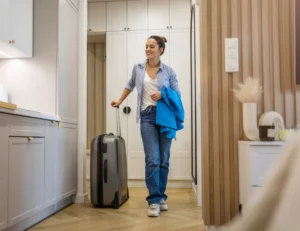
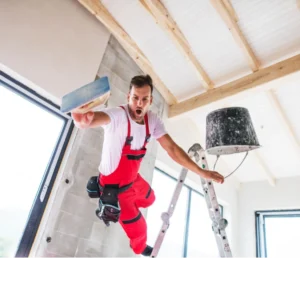
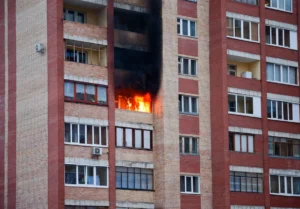

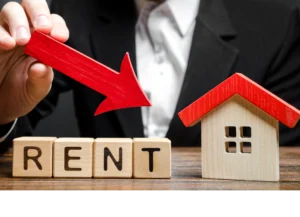

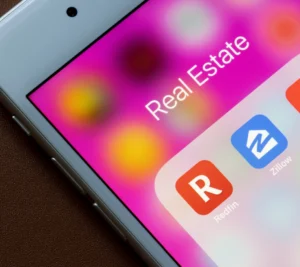
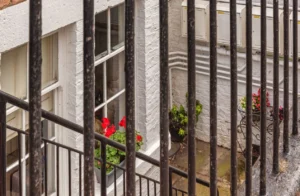




 Accessibility
Accessibility